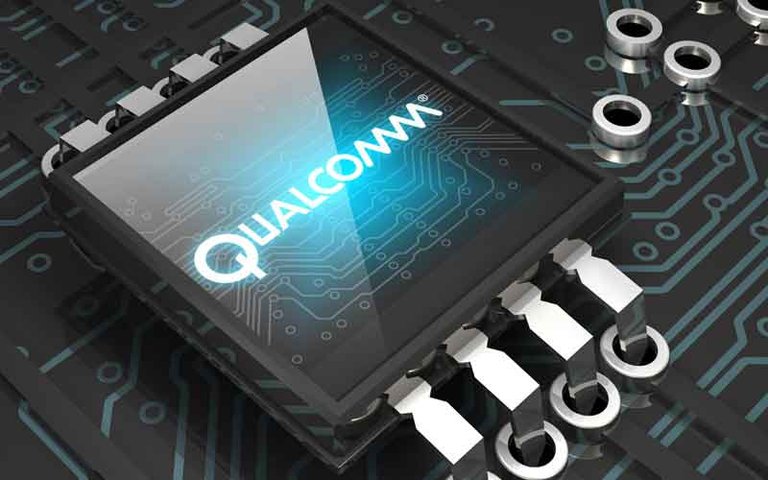
Since a past couple of months we have been hearing quite a bit about 5G implementation and the speeds it will offer in theory. Qualcomm Technologies, Inc., a subsidiary of Qualcomm Incorporated (NASDAQ: QCOM), on Monday, announced key findings from an extensive 5G network simulation the company has conducted over the past several months at MWC 2018.
Instead of just providing rough numbers from controlled tests in labs, and what the gigabit-plus speeds that 5G technology could one day offer, The companies 5G Network Capacity Simulation demonstrated the significant potential of 5G, by yielding quantitative insights into the expected real-world performance and user experience of 5G and Gigabit LTE devices, operating in Non-Standalone (NSA) multimode 4G/5G NR networks.
Qualcomm conducted two simulations, one in Frankfurt and the other in San Francisco, taking advantage of the existing cell sites in both locations. The first modeled a NSA 5G NR network in Frankfurt, Germany, operating on 100 MHz of 3.5GHz spectrum, with an underlying gigabit LTE network operating across five LTE spectrum bands.
The Frankfurt simulation showcased a downlink capacity increase of up to 5x when migrating from an LTE-only network, with a mix of LTE devices of various capabilities, to a 5G NR network with multi-mode 5G NR devices and an increased mix of advanced Gigabit LTE devices. This simulation also yielded compelling evidence of the benefits of Massive MIMO technology, with median spectral efficiency increase of up to 4x on 3.5 GHz spectrum. Below are some points which show network capacity improvements and also significant user experience gains for 5G NR capable devices when compared with LTE devices:
-> Browsing download speeds increasing from 56 Mbps for the median 4G user to more than 490 Mbps for the median 5G user, a gain of approximately 900 percent
-> Approximately 7x faster responsiveness, with median browsing download latency reduced from 116ms to 17ms
-> File download speeds of 100 Mbps for the 10thpercentile 5G user, meaning that 90 percent of 5G users have download speeds of more than 100 Mbps. This is compared to 8 Mbps for the 10th percentile LTE user.
-> Median streaming video quality increasing from 2K/30 FPS/8-bit color for LTE users to 8K/120 FPS/10-bit color and beyond for 5G users.
The second modeled a hypothetical NSA 5G NR network in San Francisco, operating in 800 MHz of 28 GHz mmWave spectrum, with an underlying gigabit LTE network operating across four licensed LTE spectrum bands plus License Assisted Access bands. The San Francisco simulation was even more impressive as it provided the first glimpse of the impact of the significantly increased capacity afforded by 800 MHz of additional mmWave spectrum on real-world user experience. Here are some key findings:
-> Browsing download speeds increasing from 71 Mbps for the median 4G user to 1.4 Gbps for the median 5G user in mmWave coverage, a gain of approximately 2000 percent
-> Approximately 23x faster responsiveness, with median browsing download latency reduced from 115ms to 4.9ms
-> File download speeds of more than 186 Mbps for 90 percent of 5G users, compared to 10 Mbps for LTE, a 1,826 percent gain. The median 5G file download speed was 442 Mbps.
-> Median streaming video quality increasing from 2K/30 FPS/8-bit color for LTE users to 8K/120 FPS/10-bit color and beyond for 5G users.
We are still a long way from actually getting a personalized 5G experience at those insane speeds mentioned above. These tests prove that Qualcomm chips have some serial 5G potential. But we(India) might still have to wait for much longer to get anywhere close to the speeds mentioned above, thanks to the network congestion we have over here. As recently a report stated that India ranked 14th in terms of 4G speed which is below Pakistan, Kazakhstan, Saudi Arabia, Sri Lanka, and Algeria.
As we reported at the starting of the month, Qualcomm is already working with 18 global operators to conduct 5G trials, and the vendor noted that over 20 leading device makers are turning to the Snapdragon X50 5G modem for their devices. With median download speeds surging over 1,000% from 4G, Qualcomm is foreseeing a “whole host of new services and experiences” beyond browsing, downloading, and streaming.
The first batch of consumer products with Qualcomm’s 5G modem should be expected in the first half of 2019. For now, we’ll have to make do with the X24 modem, which maxes out at just 2Gbps.